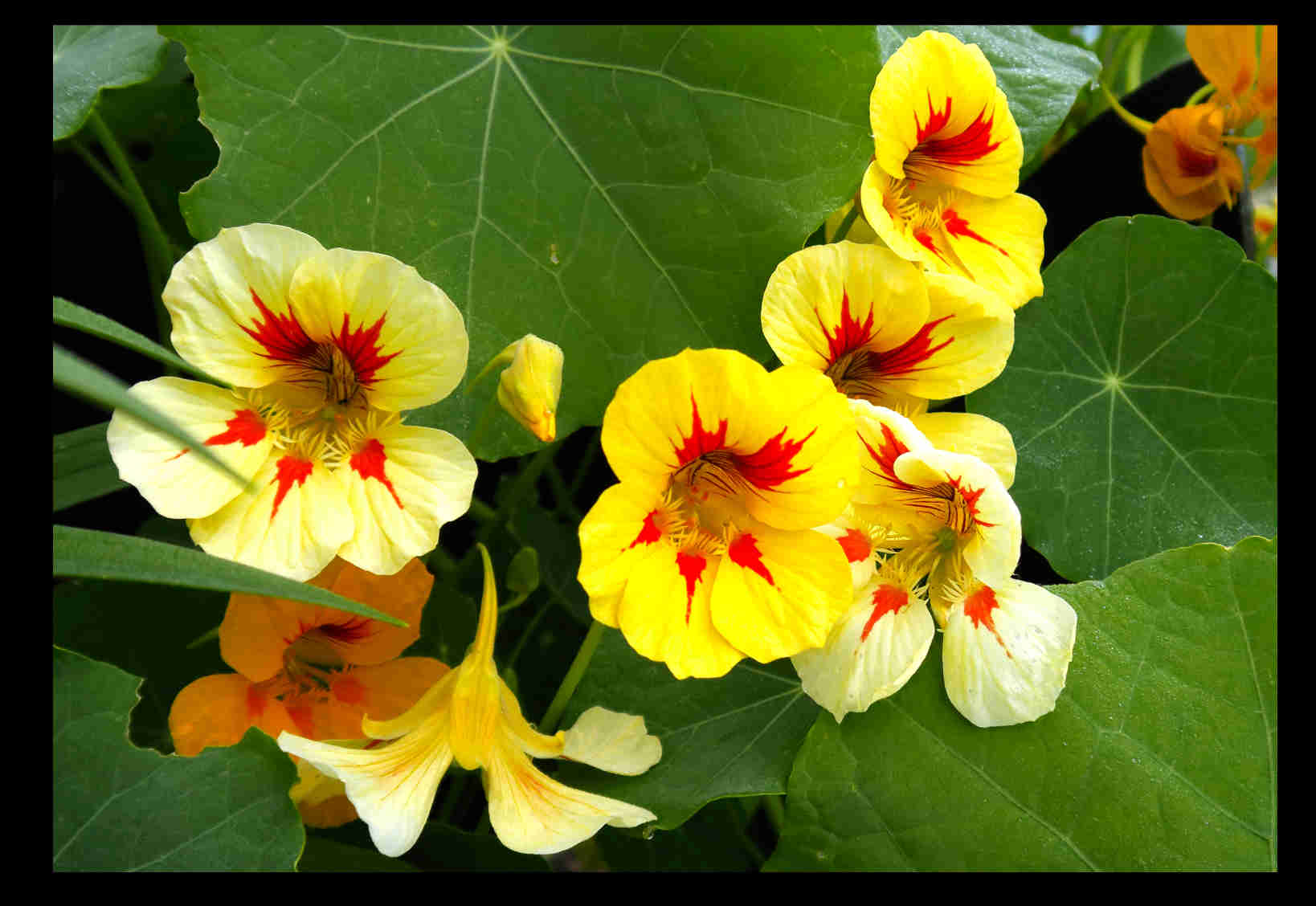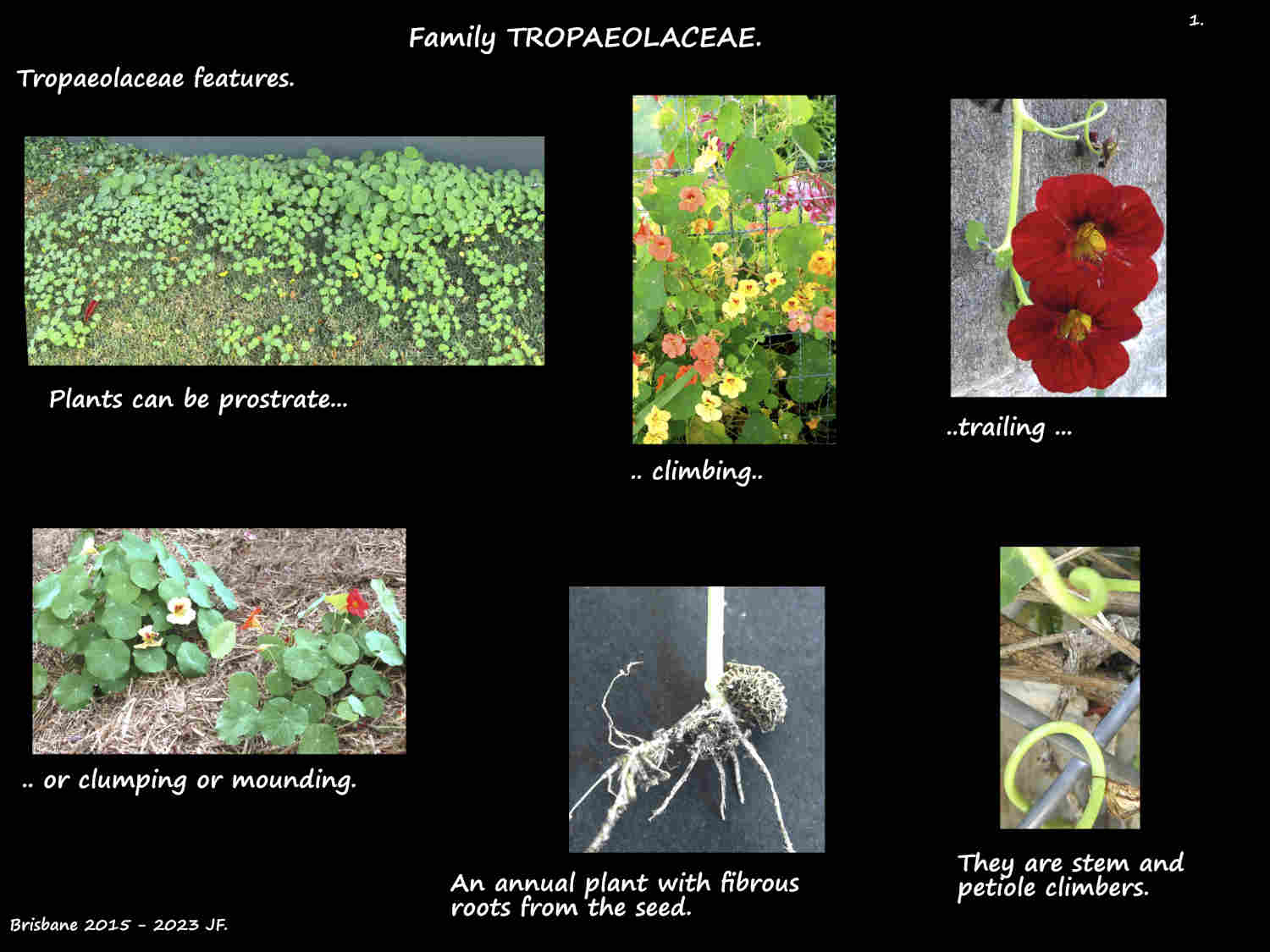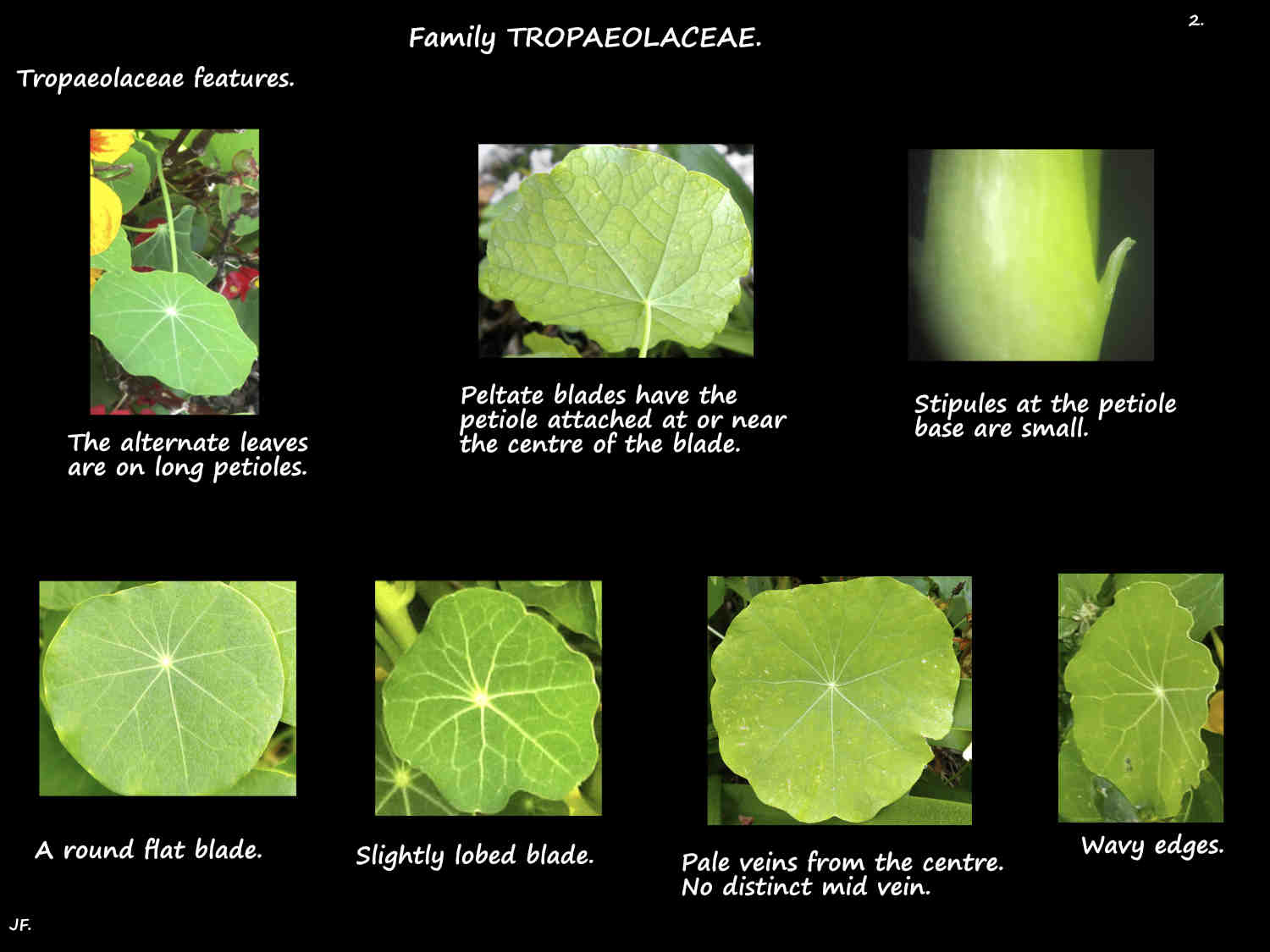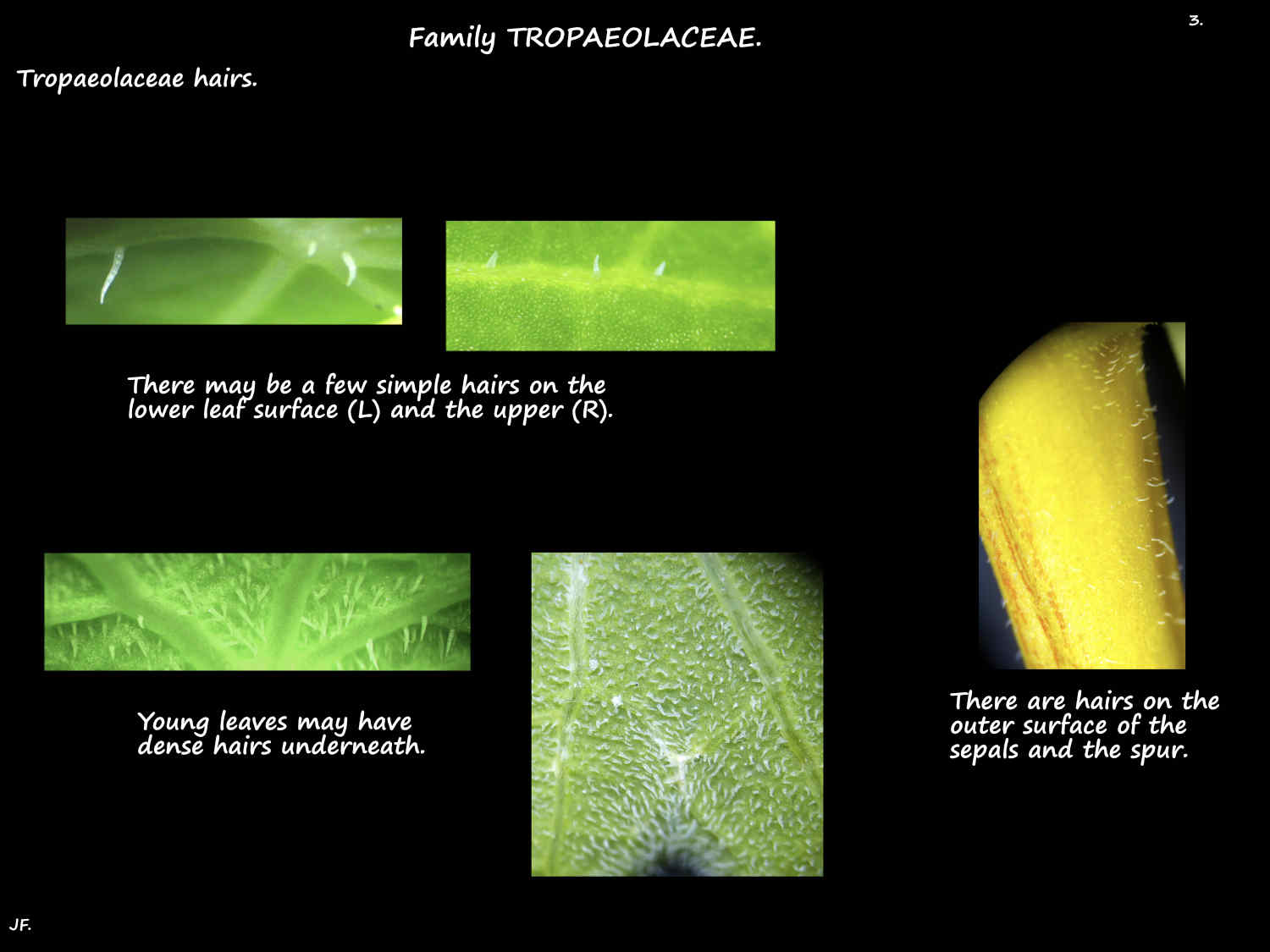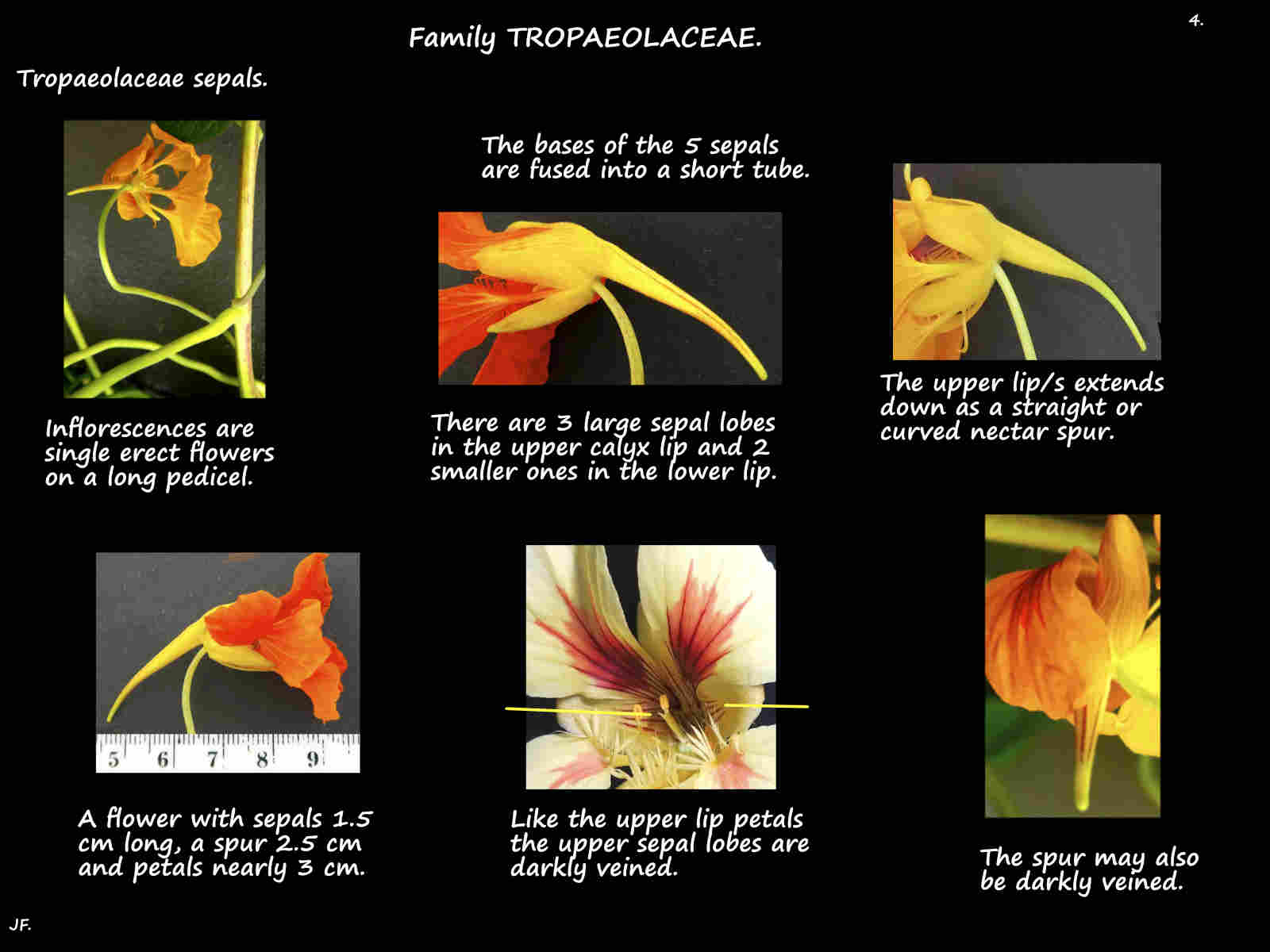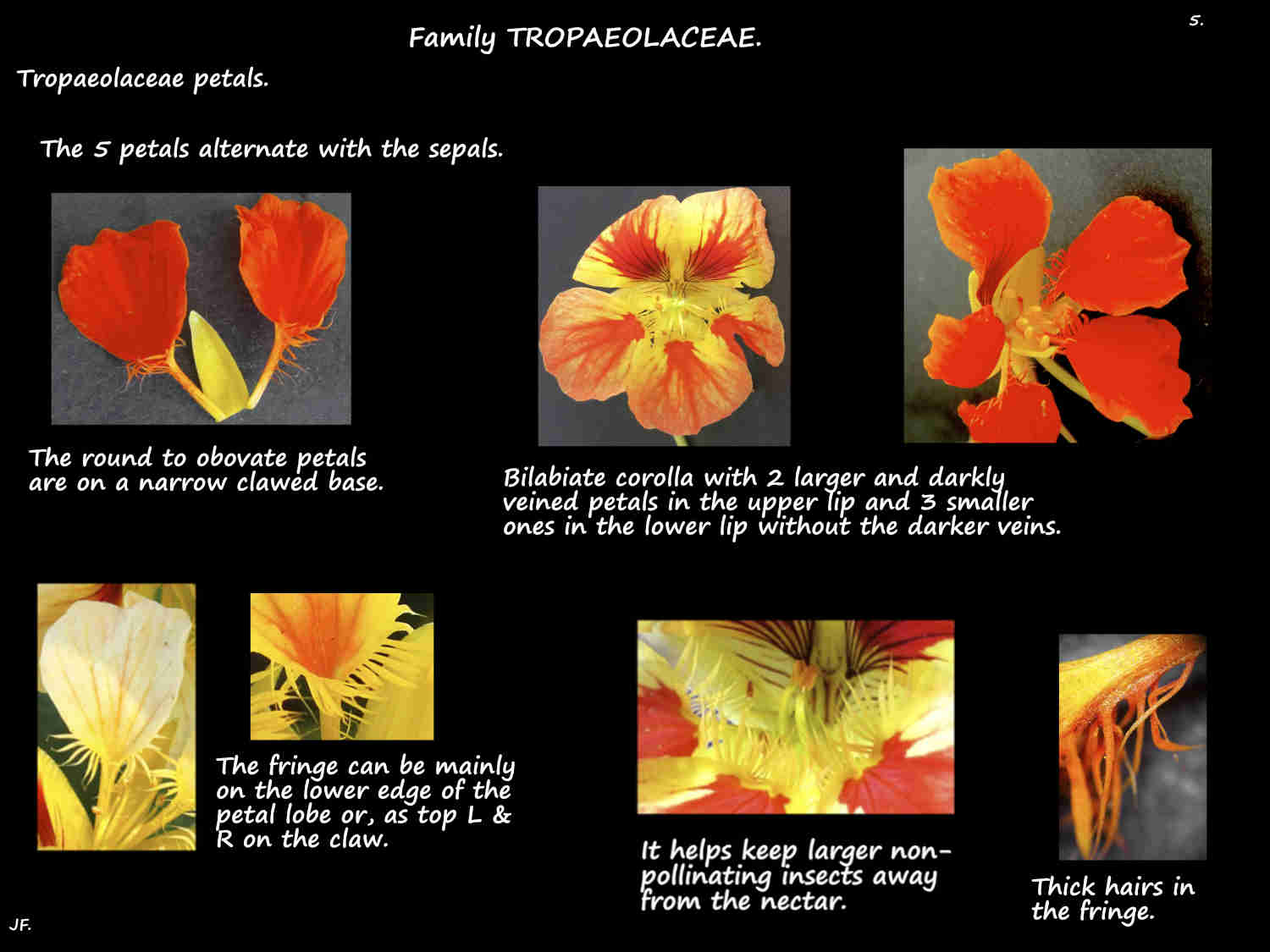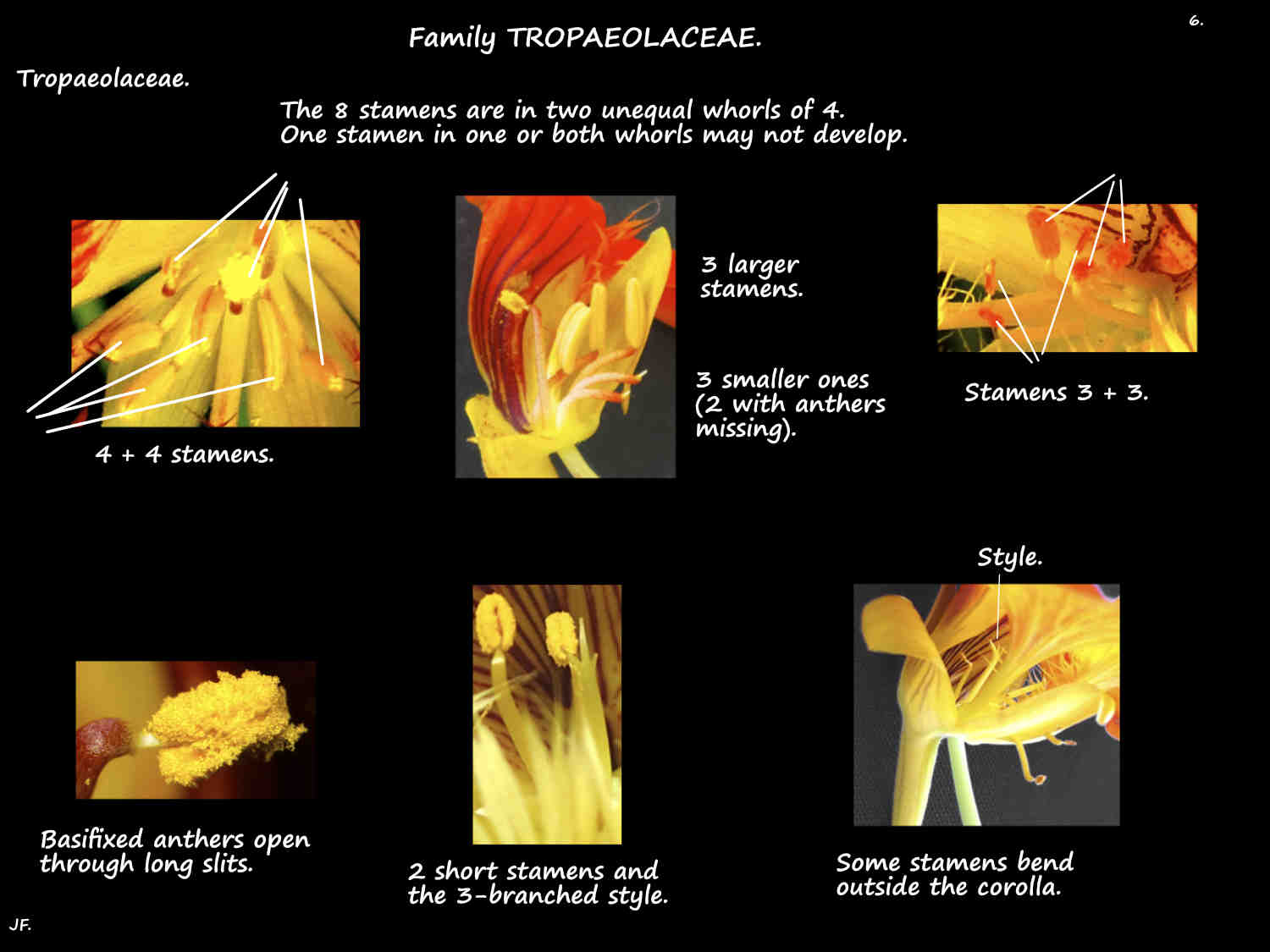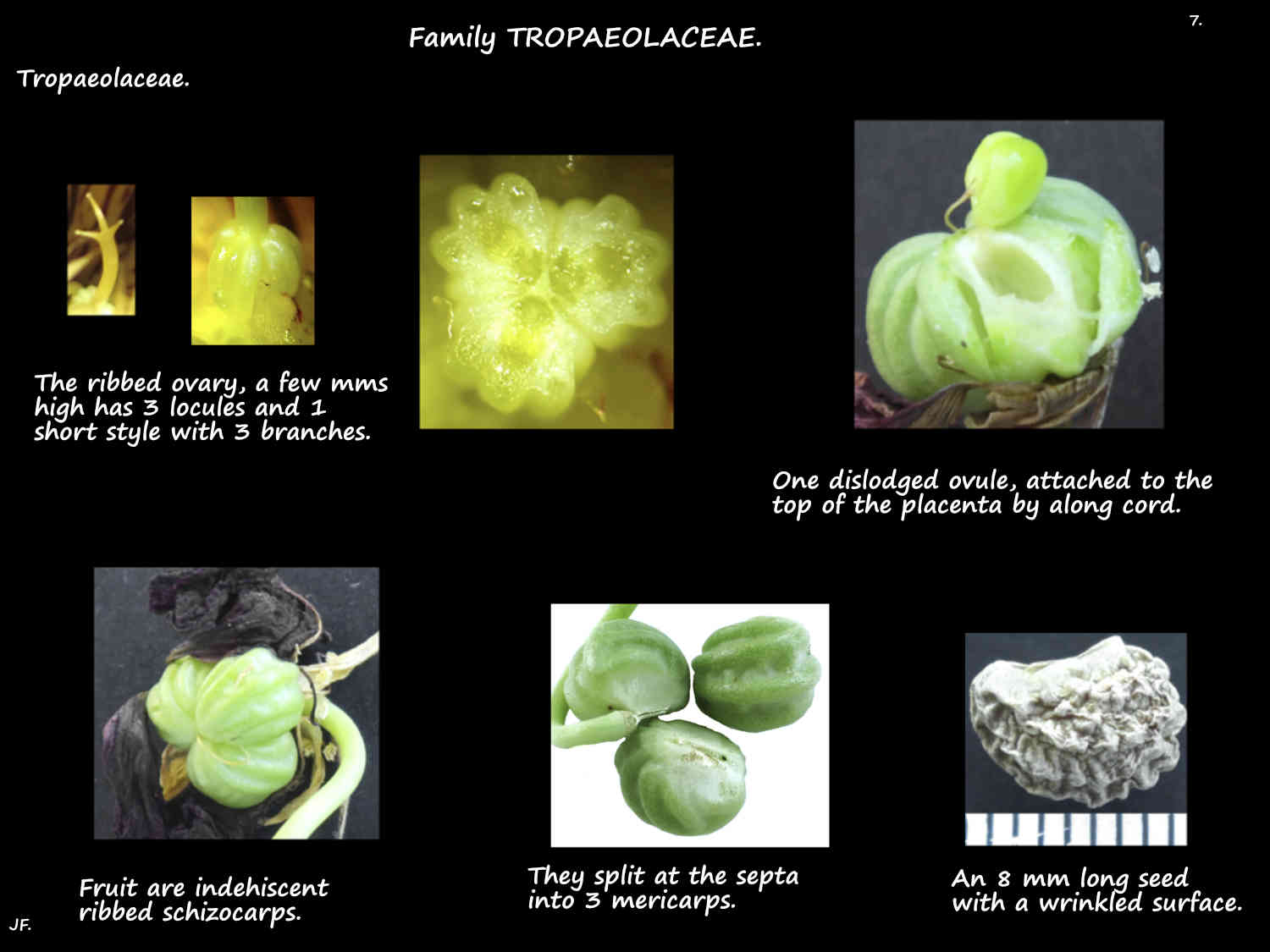Family Tropaeolaceae.
The Nasturtium family is native to Central and South America.
It is mostly recognised has having only 1 genus Tropaeolum with 90 to 95 (80 to 122) species.
The mostly annual plants can be prostrate, mounding, scrambling, climbing or trailing.
They use their smooth twining stems and petioles to climb.
Some have underground stems or rhizomes with tubers and these are perennial.
Plants are slightly succulent.
The leaves, on long petioles are almost always alternate and in a spiral.
There are stipules at the base of the petioles but they are often very small.
Leaves are peltate with the petiole attached at or near the centre of the blade.
The round blades can be entire with a smooth edge or slightly to deeply dissected into 5 or 7 lobes.
Blades can be flat or have wavy edges.
The pale veins radiate out from top of the petiole.
The surface is water repellent with most running off leaving only a few droplets.
Descriptions almost all say the plants have no hairs but they can be seen on the stems, leaves sepals and calyx spur.#
They can be dense on the lower leaf surface especially on young leaves.
Inflorescences are erect solitary flowers on long pedicels.
Flowers, up to 8 cm across are bilaterally symmetric due to the calyx spur.
The calyx has a cup or funnel-shaped base with 5 blunt lobes.
It is bilabiate (two lips) with the upper 3 lobes being larger than the 2 lower ones.
There may be some some hairs on the outer surface.
There may be dark veins on the upper sepals similar to those on the upper 2 petals.
The base of the topmost sepal is extended downwards to form a funnel-shaped spur.
The spur can be long or short, straight or curved and it has some hairs externally.
Where the sepals and petals are not exactly alternate the upper 2 or 3 sepals form the spur.
Nectar is produced from the cells lining the spur.
The 5 petals, on narrow clawed bases alternate with the sepal lobes.
The corolla is typically bilabiate with the upper 2 petals being larger and more darkly veined.
The tip of the round or obovate petal lobes may be smooth or lobed.
The base of the petal lobes and sometimes the sides of the claws are markedly fringed.
Petal colours include cream, yellow, orange, pink, red and burgundy.
They may be one colour or have various markings in a darker or different colour.
There are 8 free sterile stamens, often of different lengths in 2 whorls of 4.
However one in each whorl may not develop meaning the actual number can be variable.
The basifixed anthers open sideways through longitudinal slits.
The superior ovary, of 3 fused carpels has 3 locules.
Each locule has 2 ovules with axile or apical placentation but only one in each develops into a seed.
The short apical style has 3 branches with the stigma lobes.
Most fruit are schizocarps (dry indehiscent fruit formed from more than 1 carpel that split down
the septa between them into segments called mericarps each with only 1 seed.)
The fruit have an irregular surface.
# The online Science photo library and Arthur W. Hill, F.L.S., The Production of Hairs on the
Stems and Petioles of Tropaeolum peregrinum, L, Annals of Botany, Volume os-26, Issue 2,
April 1912, Pages 589-592, https://doi.org/10.1093/oxfordjournals.aob.a089402.
J.F.
